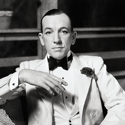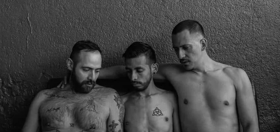
Painter Gluck redefined the landscape of American art. Born Hannah Gluckstein to a wealthy British Jewish family, Gluck rejected her bourgeois upbringing. Her father, who owned catering and coffee companies, and her American opera singer mother – as well as the British aristocracy – were astonished when young Hannah began wearing men’s clothing – and took up with other women.
Unlike some creative minds, Gluck didn’t pick up painting until later in life. Though she had no interest in art, the young artist enrolled in London’s St John’s Wood School of Art, where she first saw John Singer Sargent’s painting of the violinist, Joachim. Inspired beyond believe, Gluck made it her mission to become a painter.
Gluck first made an impression in the 1920s, when she first began circulating her portrait and floral prints. Her big break came in 1924 when photographer Emil Otto Hopp̩ helped Gluck organize a show at the Dorien Gallery. Two years later, the Fine Arts Institute gave Gluck her first solo show. Within a few years, Gluck Рwho famously hated gendered prefixes Рhad become a darling of the art world.
Gluck’s talent and family fortune allowed her entry into some of England’s most exclusive corners. While making the society rounds, Gluck came across a floral designer named Constance Spry. The women were together from 1932 until 1936. Aside from the emotional fulfillment, Gluck’s relationship with Spry helped fuel her career. She soon became one of the most famous women in England.
As her relationship with Spry crumbled, Gluck took up with Nesta Obermer, who had an unhappy marriage with an American businessman. The women stayed together through World War II, during which Gluck painted recruitment posters for the British army. In 1944, as the Axis powers crumbled, so did Gluck’s relationship with Obermer.
How about we take this to the next level?
Our newsletter is like a refreshing cocktail (or mocktail) of LGBTQ+ entertainment and pop culture, served up with a side of eye-candy.
With Obermer behind her, Gluck took up with a journalist named Edith Shackleton Heald. They moved in together in October of 1944 and would live together for forty years. During this period, which many claim to be the most tumultuous of Gluck’s life, the painter found herself struggling. Rather than paying attention to her work, Gluck began a campaign to standardize paint and canvas quality. A decade of activism finally paid off when the British Standards Institution took on supply manufacturers and raised the bar on production. By this point, however, Gluck had lost much of her artistic momentum.
Despite gathering a bit of dust, in 1970, Gluck decided to organize a major exhibition of her work. Organized over the course of three years – during which the aged Gluck suffered a heart attack – the exhibition would be her last. Gluck died in 1978, leaving behind quite a legacy. We’ve included four pieces here: a self-portrait; Medallion, which depicts Gluck and Obermer; Boxing; and The Nifty Nats.
For more on Gluck, check out The Knitting Circle, GLBTQ and the National Portrait Gallery.






















Ash
What a great profile, I’ve never heard of Gluck but she sounds like a fascinating lady. Thanks, Queerty!